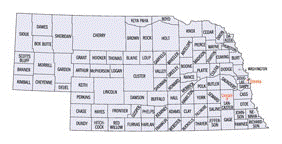Geography Program

Geography Program: Faculty Publications
Document Type
Article
Date of this Version
2020
Citation
Journal of Public Administration Research and Theory, 2020, 636–655 doi:10.1093/jopart/muaa013
Abstract
With the widespread use of collaborative governance mechanisms for mitigating water pollution, an opportunity exists to test alternative institutional designs based on collaborative governance theory using computer simulation models, particularly when there is a clear relationship between governance networks, observable resource allocation decisions, and measurable outcomes.This is especially the case for wicked problems like nonpoint source water pollution where there are com- pelling questions regarding how best to design policies, allocate funds, and build administrative capacity to meet water quality standards. We present an agent-based model (ABM) of water gov- ernance for the Lake Champlain Basin to simulate the impacts of alternative collaborative govern- ance arrangements on the development of suites of water quality projects. The ABM is connected or coupled with land use and phosphorus load accumulation models that are informed by existing hydrologic models, project datasets, and state-set load reduction targets. We find that regionally arranged collaborative governance in water quality project planning and implementation can lead to better water quality outcomes, thereby affirming one of the central premises of collaborative governance regime theory. We also find that externally mandated collaboration, as opposed to voluntary, self-initiated collaboration, can lead to better water quality outcomes, adding to our understanding of which type of collaborative governance arrangement is best suited to the spe- cific contexts of this case. Further, without adequate administrative capacity in the form of human resources located in central network actors to manage project funds, “administrative bottlenecks” may form and money can go unspent. This research demonstrates the efficacy of using simula- tions of alternative institutional design for theory testing and tuning, and policy prototyping.


Comments
The Author(s) 2020.